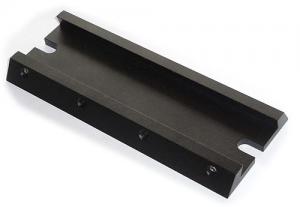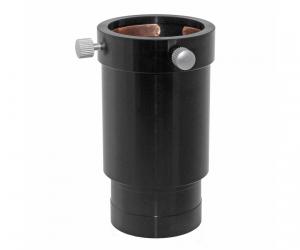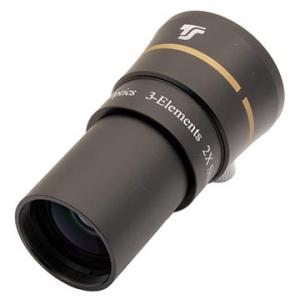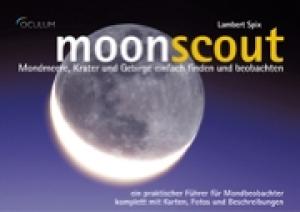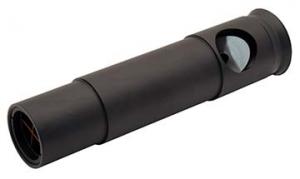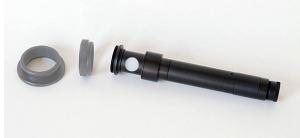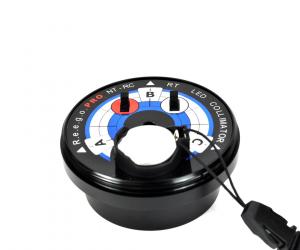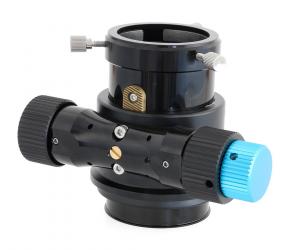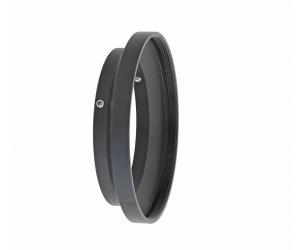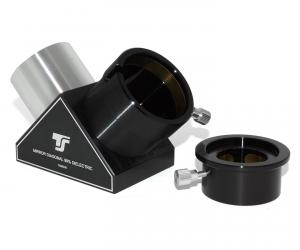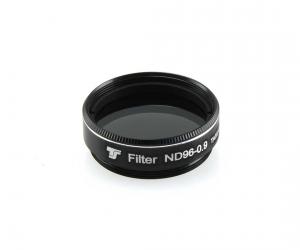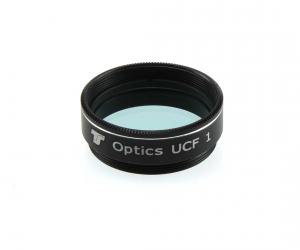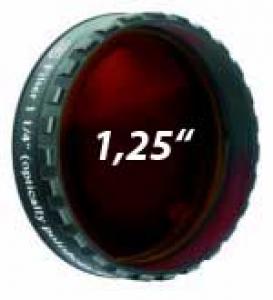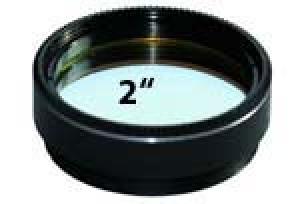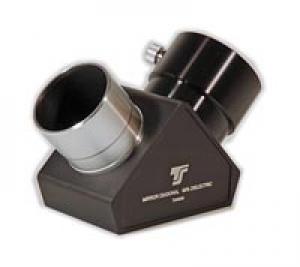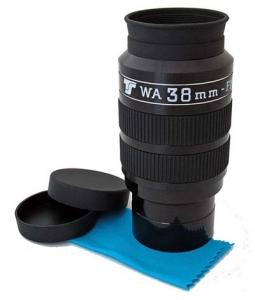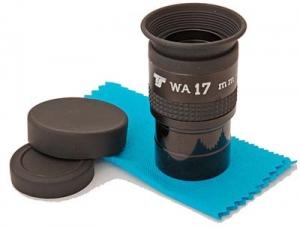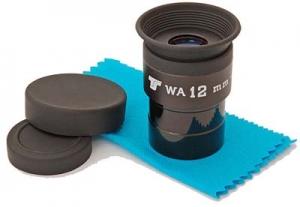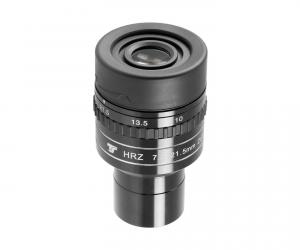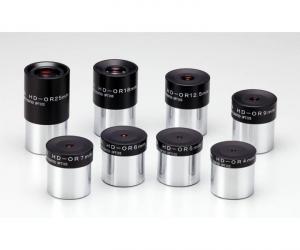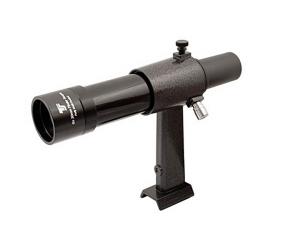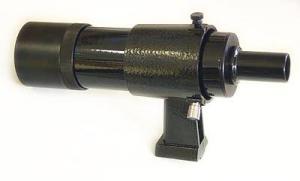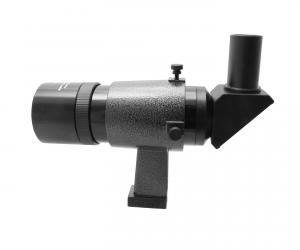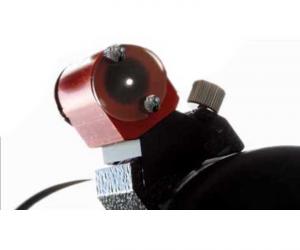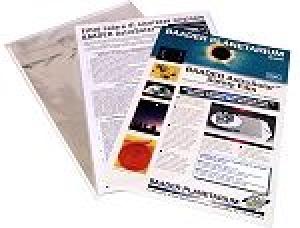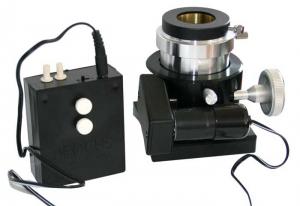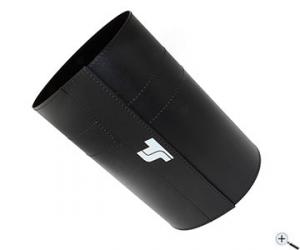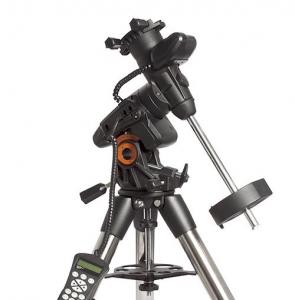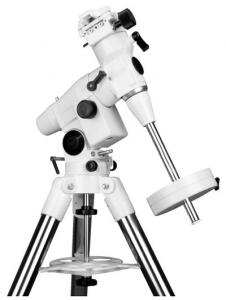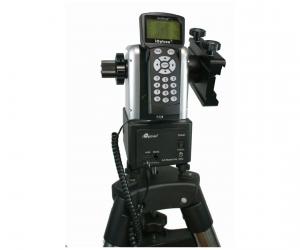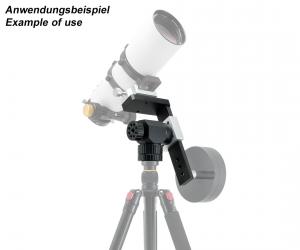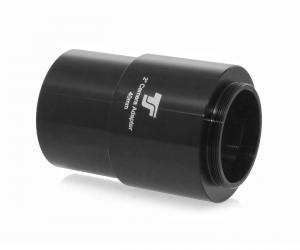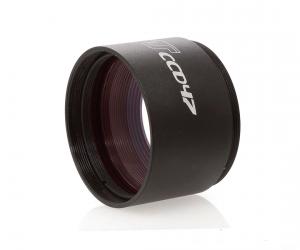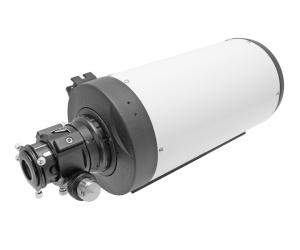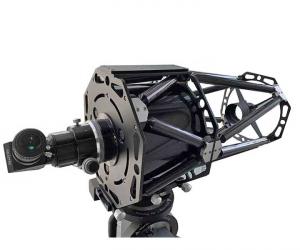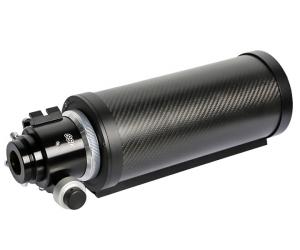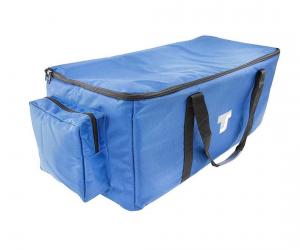- Telescopes
- Overview:
Telescopes - Achromatic Refractor
- Apochromatic Refractor
- Overview:
Apochromatic Refractor - ED Refractor - less color aberration than an achromatic
- SD APO - color free 2-element APO objective
- EDT APO - 3 element ED objective
- High End APO with 3-element APO objective - no color aberation
- Flatfield APO with flat field for Astrophotography
- All Apos and EDs from all manufacturers - large overview
- TS APO and ED from Japan with high quality optics
- Overview:
- Newtonian Telescopes
- Dobsonian Telescopes
- RC Ritchey Chretien Telescopes
- Casssegrain Telescopes
- Reflektor Telescopce with Lens Correcture
- Maksutov Cassegrain Telescopes
- GoTo Telescopes
- Solar Telescopes H-Alpha
- Overview:
- Mounts Tripods Rings Rails Power Supply ...
- Overview:
Mounts Tripods Rings Rails Power Supply ... - Mounts Equatorial with GoTo
- Mounts Equatorial without GoTo
- Mounts Azimutal with GoTo
- Mounts Azimutal without GoTo
- Mounts GoTo - Harmonic Drive
- Travel mounts for astro imaging
- Tripods Piers Polar Wedges
- Mount Control & Electronics
- Dovetail Clamps, Plates and Mount Adapters
- Tube Rings
- Power Supply
- Counterweights Balance Weights
- Mount Accessories - Other
- Overview:
- Telescope Accessories
- Overview:
Telescope Accessories - Eyepieces
- Barlows & Reducer Lenses
- Diagonal Mirrors and Prisms
- Binocular Viewers
- Finder Scopes
- Telescope Collimation and Test
- Cleaning Tools
- Transport and Storage
- Dust protection for Telescopes & Accessories
- Stray Light Protection
- Dewcaps and Heater
- Focusers, Adapters, Motorfocus
- Telescope DIY & Improvement
- Other telescope accessories
- Replacement Parts
- Overview:
- Filters
- Overview:
Filters - Color Filters and Color Filtersets
- Nebular Filters for Visual Observing
- Neutral-Density and Polfilter
- Photo Narrowband Nebular Filters
- Photo Broadband Filters
- Photo Planetary Filters
- Photo R-G-B and IR Cut Filters
- Photo - Filtersets
- Photometric Filters
- Clip Filter for DSLR Cameras
- Filter Wheels and Filterslider
- Solar Filters for white light
- Solarfilter for H-Alpha and Calcium
- Overview:
- Adaptors
- Overview:
Adaptors - Adapter 1,25" and 24,5mm
- Adapter 2"
- Adapter T2 - M42x0.75
- Adapter M48x0,75
- Adapter M54
- Adapter SC
- Adapter M63
- Adapter M68
- Adapter to other Threads
- Adapter Extensions
- Adapter camera bayonet
- Adapter Objective Filterthread
- Adapter Quick Changing , Rotation
- Adapter Eyepiece Projection
- Adapters Tilting
- Overview:
- Astrophotography and Photography
- Overview:
Astrophotography and Photography - Cooled Cameras
- Cameras without Cooling
- Deep-Sky Cameras uncooled
- Set-Offers Camera, Filter, Wheels
- Acessories for Cameras
- Travel mounts for astro imaging
- Imaging Correctors for Telescopes
- Autoguiding Cameras & Sets
- Everything for Guiding
- Focusing aids - Bahtinov mascs
- Flat Field foils and boxes
- Lenses for Cameras
- Piggyback Camera Holder
- Camera Bags, Photocases & more
- Digital Camera and Smartphone Adapter
- Other photo accessories
- Overview:
- Binoculars, Spotting Scopes, Microscopes, Range Finders
- Overview:
Binoculars, Spotting Scopes, Microscopes, Range Finders - Spotting Scopes and Acessories
- Roof Prism Binoculars
- Binoculars with Porro prisms
- Binoculars from 100mm Aperture
- Binoculars with 1,25 inch eyepieces
- TSMX APO Binoculars
- Binoculars for Astronomy
- Binoculars Hiking Bird watching
- Monoculars - Opera Binoculars
- Accessories for Binoculars
- Range Finders
- Microscopy
- Bags for Phototripods & Binoculars
- Overview:
- Phototripods and Binomounts
- Books, Software
- Overview:
Books, Software - Books for Astronomy Beginners
- Star Charts and Planispheres
- Books about our Solar System
- Observing Tips for Amateurs
- Popular Astronomy Literature
- Teaching material
- Astrophotography books
- Telescopes, Observatories, Construction
- Calendars Yearbooks
- Software, Star Charts
- Books for Microscopers
- Books Nature and Animals
- Nature Photography TimeLapse
- Overview:
- Night Vision, Magnifiers, Weather, Domes & more
- Beginner Astronomy and Gift Ideas
- Second Hand & Special Offers
- New products
Manufacturer: -TS Teleskope
Product number: TSCas8M
EUR1090.00new
EUR 1.090,00RRP EUR 1.190,00you save 8.4% (EUR 100,00)
incl. 19 % VAT (DE)
The VAT indicated refers to that applicable in Germany. After logging in, the VAT amount is adjusted to the applicable VAT of the stored delivery country. Therefore, the final price may vary accordingly.
excl. 13.95 € shipping costs (DE)
more details to the shipping costs ...Please log in to calculate shipping costs to your country.
rating: 5.0 of 5TS-Optics GSO 8" f/12 Cassegrain telescope 203/2436 mm OTA3
- Details..
- Technical data..
- In the box..
- Reviews..
- FAQ..
- Manufacturer infos..
- Safety informations..
TS-Optics GSO 8" f/12 Hyperbolic Cassegrain Telescope
Cassegrain telescopes combine the benefits of a Newtonian telescope being a pure reflective system with a short-built design. In terms of optical quality Cassegrain telescopes are superior to customary Schmidt-Cassegrain systems. Cassegrain telescopes are mainly used for photography of the moon and the planets and for observation of astronomical objects. Thanks to the highly sensitive sensors built into modern astro cameras, even deep-sky photography of nebulae, star clusters and galaxies is possible.The advantages of the TS-Optics Cassegrain telescopes in summary:
The TS-Optics Cassegrain is a versatile telescope
Astrophotographic results obtained with this telescope on Astrobin
Here you can find some astrophotographs made with this telescope model: Link to Astrobin| Optics: | Cassegrain optics with parabolic primary and hyperbolic secondary mirror |
| Aperture: | 203 mm - 8" |
| Focal length: | 2436 mm |
| F-ratio: | f/12 |
| Reflectivity: | 99% to primary and secondary mirror |
| Colimation aid: | central marks on the secondary mirror for easier collimation |
| Suitable for Infrared photography: | yes |
| Backfokus: | roughly 150 mm from the 2" receptacle |
| Tube diameter: | 230 mm |
| Tube length: | roughly 620 mm |
| Weight: | 8.2 kg |
| Secondary mirror obstruction: | 33% (linear) |
| Focuser: | 2" Crayford focuser with micro-gear reduction |
| Connection thread of the focuser: | M90x1 on the tube |
| Dovetail: | Vixen-GP - Skywatcher-EQ5 style, Losmandy style |
Astrophotographic results obtained with this telescope on Astrobin
Here you can find some astrophotographs made with this telescope model: Link to AstrobinThis is an image from our customer Dodi Dierick, B
 Object: Moon with craters Theophilus, Cyrillus, Catharina
Object: Moon with craters Theophilus, Cyrillus, CatharinaPhotographer: Dodi Dierck, Ghent, Belgium
Date taken: 2021-07-29
Imaging conditions: moderate seeing
Telescope: 8" Cassegrain TSCas8M
Camera: ZWO ASI290MM
Method: Mosaic of 6 images
Processing: stacked with Autostakkert, final processing using Adobe PS, with 10% magnification
Congratulations for this very good result!
This is another image from our customer Dodi Dierick, B
 Object: Jupiter (only 19° height
Object: Jupiter (only 19° heightPhotographer: Dodi Dierck, Ghent, Belgium
Date taken: 2021-09-16
Imaging conditions: moderate seeing, bad transparency
Telescope: 8" Cassegrain TSCas8M
Focal extender: TMB Barlow lens 1.8x
Camera: ZWO ASI290MM
Additional information: First Jupiter image with this telescope
Congratulations for this result,too!
Just tested Classic Cassegrain 8" from TS
I have to say, I am VERY happy with its optical performance!Mechanically its excellently made!
Its much better mechanically than Celestron C8 I had, and I have to say I like it better optically, and as well because no image shift, and flat image.
Focusser strong and smooth working, nice, def no need any upgrade even for most demanding observers like me!
One more important thing I notice: no annoying dew/moisture/water drops like on all SCT and all Maksutov telescopes with corrector plates-very important feature!
With small Baader T2 prism, I am able to reach focus with my Carl Zeiss binoviewers without need of using any GPC, barlow etc-great feature for all binoviewer users!
Overall, high quality telescope both optically and mechanically, suitable for any application, for very affordable price!
Thanxs for that great scope!
CS
Denis, binoviewers expert
Here a test report from our customer Guus Gilein, NL
Until a few years ago I owned a TS 127 mm f/7.5 triplet refractor which I used mainly for making brightness estimates of variable stars. Sometimes I wished I could see just a little bit deeper than this refractor was able to show. For that reason I bought a 180 mm f/15 Skywatcher Maksutov and the telescopes where complement to each other. With the Maksutov I could see about 0.5 magnitude fainter stars, the refractor gave wide fields at low magnification. Both delivered views rich in contrast and sharp stars till almost the edge of the field of view. Something that helps enormously with observing variable stars. The comparison stars didn?t need to be near the centre of the field.At the end of 2016 I was able to buy a 152 mm f/8 ED Lunt/APM doublet refractor at the HATT in Hattingen for a very interesting price. Lunt was selling out its APM stock, so slightly heavier loaded than on the way to Hattingen did my astrofriend Nico and I return home.
Such a 15 cm (semi) apo refractor was a dream of me for years, and it performs as expected. In fact it performs so good that it almost bridged the difference between the old 127 mm refractor and the 18 cm Maksotuv. So this last one had actually become superfluous.
But I did miss the old situation, now and then I wished I could see just a little bit deeper than the new 15 cm refractor was able to show. Nothing human is alien to me!
But what should I do? If I wanted to go to the old situation (and I wanted that for certain!) than I needed a telescope that would again show stars some 0,5 magnitude fainter than with the 15 cm refractor. With some calculations it was clear it should be a 21 cm telescope. But which one?
A Newtonian dropped out for a variety of reasons. A 20 cm Maksutov is only available as a second-hand Intes and due to the increasingly thicker meniscus lens getting heavier and heavier.
No Schmidt-Cassegrain has ever been able to charm me, I don?t like their star images, and in contrast to a Maksutov their corrector plate fogs much faster.
My friend Nico?s 210 mm Takahashi Mewlon seems to be the perfect candidate: not so heavy, a perfect and contrasty image. But: second-hand almost none-existent and new just a little bit too expensive to my taste, I didn?t want to spend that much.
Enters the summer of 2018: Teleskop-Express announces the arrival of a new telescope type in their program: a 6? and 8? Classical Cassegrain with a parabolic main mirror and a hyperbolic secondary. No meniscus or lens that could fog, only two reflections of each 99%. The weight is even less than my 15 cm refractor and my old Maksutov: just 7.5 kg. The price is right too: a Mewlon sales for 3.5 times as much!
It comes with a Vixen style as well as a Losmandy style dovetail: very handy for me. With the first I can put it on my Skytee mount, with the other on my Celestron CGEM mount.
Delivery would be the beginning of september 2018. I informed TS about my interest in this new toy and put my trusty Maksutov on the market. That one was sold within days, the replacement took a little longer: it took until mid-June 2019 before it fell on the doormat.
I also had ordered TSRCkolli, a 2? collimation tool, but that one was not available at that moment. The secondary of the Cassegrain has a small central circle, perfect for aligning. I used a Cheshire eyepiece instead and suspected a small mis-alignment, perhaps due to some rough handling of the transport company as TS inspects the Cassegrains before shipment.
For the moment I let it for what it was.
The 1:10 focussing knob made a rattling noise when turning, but that was easily resolved with a Allen wrench. I just had to put the knob a fraction of a millimeter more outside.
To my surprise it was clear for an hour or so and first light could be carry out on the day of arrival. Just after sunset the small crescent Moon was just visible next to our neighbours house and I could align the finder. I could also check if my eyepieces came into focus.
Well, they did not with my 2? and 1.25? Baader Amici astroprisms, the focal point was more outside than the 5 cm travel of the focusser could handle. But no problem, there are three M90 rings included with the Cassegrain. Just unscrew the focusser with a big ring (also very handy to rotate the focusser in any desired position), attach one or more rings and screw the focusser on the ring. Apart from one eyepiece (my 16.7 mm Zeiss Diaskope) I was able to reach focus with all the others.
Although in bright twilight (I live 52 degrees north) at half past eleven in the afternoon I could compare my first views with the Cassegrain with that through my 15 cm ED refractor. And they were not bad at all. M57, the Ring Nebula, was noticeably brighter and showed more details through the Cassegrain than through the refractor. The Double Double was easily split.
Even in 2? eyepieces I could notice no vignetting: stars in the centre on the edge of visibility were still on the edge of visibility near the edge of the field of view.
With the 15 cm refractor and a 7 mm Vixen SSW (171x) I couldn?t observe the magnitude 13,1 comparison star near Z Cam, and the magnitude 12,5 star was just peripherally visible, just 20% of the time.
With the Cassegrain and a 17.3 mm Delos (140x) both stars were directly visible and I noticed some even fainter. That was better than expected! Does the 99% reflectivity really helps? Both telescopes had the same 1.25? Baader Amici.
With a 10 mm SSW (243x) on the Cassegrain the image quality was still good, there was no deterioration to be found. Stars were still sharp with sometimes a small first ring was seen (depending on the seeing) Then came the clouds to remind me that you can?t expect anything the first week you have new astrotoys ...
After three days it cleared again and I was able to perform some more tests. One difference with a Maksutov was immediately clear: spikes! I had Arctures centered and it showed four bright spikes with two more from the Amici. Fast forward to Alco and Mizar and to my relief there were no spikes visible anymore: just a beautifull first ring around Mizar at 140x.
The telescope is very easy to handle, I?m able to observe within a few minutes. Just putting it on my Skytee mount, aligning the finder (see picture) and you can start. The telescope is stored in an unheated shed so there is not so much difference in temperature, and although on unfocussed stars you can see it?s cooling down, the image quality is still good from the beginning: even with a 13 mm Ethos (187x) stars are sharp.
Jupiter was visible just next tot he Moon just above the house of some neighbours, and although the close proximity of the Moon I could see no reflections. The background was bright but a) it was twilight, b) there was some fog and c) Moon nearby.
Jupiter was only 14 degrees above the horizon so atmospheric refraction did hinder, but when seeing calmed down I could see more details than I could have painted. The yellow to yellow-brown color of the equatorial zone also came through clearly in those moments. I can´t remember ever seeing Jupiter like that. That was one of the better Jupiter observations in my more than 45 years of observing.
Then to the Moon and Plato viewed with my 12.7 mm Zeiss Diaskope (192x). As the Moon was near full, the small craterlets could no longer be seen as black indentations, but as light spots. I counted at least five at times when the atmosphere came to rest.
Since then the TSRCkolli had arrived and there was indeed a very small misalignment of the secondary. Just a small turn with a Allen wrench did the job. Very easy at daylight!
I also observed some more with the Cassegrain and every time I?m amazed how much deeper I see compared to the 15 cm refractor. And that one showed the same amount of stars as the 18 cm Maksutov. I have to measure it precisely yet, but I think it?s almost a full magnitude compared to the 15 cm. The view around SS Cyg was filled with much more stars than I have ever seen with the 15 cm.
Deepsky is very nice too, M13 is beautifully resolved.
Now I have to wait till August/September when there is astronomical darkness again to see its full potential. Nico and I are planning a comparative test between his Mewlon and my TS Cassegrain. The focal lengths are almost identical, very easy to compare with the same eyepieces.
Nico?s observing side is outside the city (I almost always observe within) next to the dunes so the local seeing will be better and we can push the telescopes to their limit. I will make another report on that comparison, as well on its behaviour on small faint deepsky objects.
Till now the Cassegrain does everything I hoped it would do, and even better!
 The 20 cm f/12 Cassegrain on the Skytee mount and a Berlebach tripod. The finder on the left is a 6 cm Baader Vario finder, so I need only a RDF for first alignment on a bright star.
The 20 cm f/12 Cassegrain on the Skytee mount and a Berlebach tripod. The finder on the left is a 6 cm Baader Vario finder, so I need only a RDF for first alignment on a bright star. Notice the optional 3? Baader handle: very handy for putting it on and off a mount!
Notice the optional 3? Baader handle: very handy for putting it on and off a mount! Baffles, baffles and even more baffles!
Baffles, baffles and even more baffles! The Cassegrain on a Celestron CGEM. Now a 6 cm finder is attached on the Vixen dovetail.
The Cassegrain on a Celestron CGEM. Now a 6 cm finder is attached on the Vixen dovetail.Question:
How do I get the Cassegrain onto a mount with EQ5/Vixen level quick connection?
Answer from Teleskop-Service:
You can swap the rails on the Cassegrain or remove one of the rails completely. Simply unscrew the lower Losmandy level rail and the upper Vixen rail with the bearing blocks and screw the Vixen rail to the underside. The threads fit. You do not need to screw the Losmandy rail to the top. The telescope remains stable even without the rail.
| Manufacturer / Importeur: | Teleskop-Service Ransburg GmbH |
| Street: | Von-Myra-Str. 8 |
| ZIP / City: | 85599 Parsdorf |
| Country: | germany |
| Telefon number: | +49 89 99228750 |
| Email: | info@teleskop-service.de |
| Website: | www.teleskop-express.de |
Safety informations: PDF Download
Recommended accessories
Accessories for mounts
Adapter bar for GP dovetail bars on 3" Losmandy level
EUR 59,90RRP EUR 69,00you save 13.2% (EUR 9,10)
Adaptors
Barlow, Corrector, Reducer
TS-Optics TSShorty 2x Apo Barlow, 1.25 inch, 3-element
EUR 79,90RRP EUR 99,00you save 19.3% (EUR 19,10)
Books
Cleaning & Collimating
Customers who bought this product also bought...
Eyepiece-side accessories like Filters
TS-Optics 2" Star Diagonal with 99% Reflection - 1/12 lambda
EUR 159,00RRP EUR 199,00you save 20.1% (EUR 40,00)
TS-Optics 1.25" Grey Filter ND 09 - 13% Transmission - Neutral Density
EUR 19,90RRP EUR 24,90you save 20.1% (EUR 5,00)
TS-Optics 1.25" UCF Moon Filter, Planetary Filter and Nebula Filter
EUR 19,90RRP EUR 26,90you save 26% (EUR 7,00)
Eyepieces
TS-Optics 38 mm 2" - 70° Wide Angle Eyepiece
EUR 119,00RRP EUR 169,00you save 29.6% (EUR 50,00)
TS-Optics 12 mm 1.25" - 60° Wide Angle Eyepiece
EUR 49,00RRP EUR 89,00you save 44.9% (EUR 40,00)
TS-Optics Premium Zoom Eyepiece 7.2 mm to 21.5 mm - 1.25"
EUR 129,00RRP EUR 159,00you save 18.9% (EUR 30,00)
Finder & Accessories
TS-Optics 8x50 Finder - straight view, black colour and with adjustable bracket
EUR 69,00RRP EUR 89,00you save 22.5% (EUR 20,00)
TS-Optics 8x50 Finder - with Bracket - black colour - 90° angled
EUR 98,00RRP EUR 109,00you save 10.1% (EUR 11,00)
General Accessories
Rigel nFocus Motorfokus for GSO and TS-Optics Crayford Focusers
EUR 239,00RRP EUR 269,90you save 11.4% (EUR 30,90)
TS-Optics flexible Dew Shield for tube diameter from 230 to 270 mm
EUR 52,90RRP EUR 59,00you save 10.3% (EUR 6,10)
Astroprints mounting kit for ZWO EAF motor focus on Monorail N2 focuser, Gen II
EUR 80,90RRP EUR 90,00you save 10.1% (EUR 9,10)
ZWO EAF focus motor with USB-C connection for power supply and data transfer
EUR 239,00RRP EUR 257,00you save 7% (EUR 18,00)
Mounts
Celestron AVX GoTo Mount for Astronomy and Astrophotography
EUR 1.249,00RRP EUR 1.495,00you save 16.5% (EUR 246,00)
iOptron AZ Mount Pro GoTo with LiteRoc Tripod
EUR 2.390,00RRP EUR 2.597,00you save 8% (EUR 207,00)
TS-Optics Altazimuth Mount for Astronomy and Nature Viewing
EUR 239,00RRP EUR 299,00you save 20.1% (EUR 60,00)
Photo Acessories
Similar Products
Transport & Covers
TS-Optics padded Transport Bag for 8" and 9.25" SC, RC telescopes
EUR 109,98RRP EUR 129,00you save 14.7% (EUR 19,02)
Reviews
Written by Pierre Mauries
on 2025-03-27
"Very well made instrument. Collimation seems daunting at first, but you just need to take your time (star collimation may be slow, but very effective) Very nice views of the planets, mostly limited by seeing. What a beast!"
Written by Sébastien GOZE
on 2025-03-07
"Very good product : Cassegrain TS 200mm"
Written by Peter Christensen
on 2023-03-25
"Kein kommentar"
Written by Lauren Macmullin
on 2021-08-10
People should know this, this telescope has an effective diameteter of 186mm not 203mm as advertised by GSO(TS, orion etc). I measured this myself and confirmed it to be true after reading a review which included feedback from Ageenaastro and GSO but I had to measure for myself. This makes the linear obstruction 36% and the F ratio 13. Other than that I look forward to testing this scope as the Optics on my RC8 scopes have been good.
Written by Konstantin Schäfer
on 2020-11-20
"Sehr gutes Teleskop, allerdings brauch man auch eine entsprechende Montierung dazu."
Written by Roland Kampa
on 2020-08-23
"Hobby astronom"




















